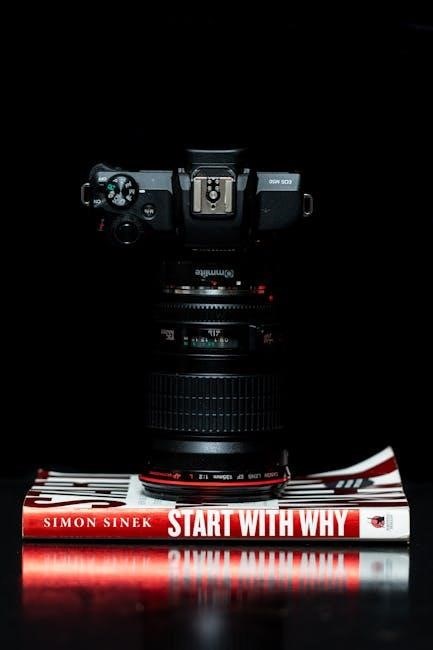
Manual focus lenses require photographers to adjust the focus ring for sharpness, offering precise control over the focal point without relying on autofocus systems.
What is a Manual Focus Lens?
A manual focus lens is a type of camera lens that requires the photographer to adjust the focus ring to achieve sharpness, rather than relying on autofocus. It provides direct control over the focal point, allowing precise adjustments. These lenses are ideal for photographers who value creative control and accuracy. They are often preferred in genres like macro, portrait, and landscape photography, where exact focus placement is critical. Manual focus lenses are generally more affordable and simpler in design compared to autofocus lenses.
Why Manual Focus Lenses Are Still Relevant Today
Manual focus lenses remain relevant due to their timeless optical quality and creative control. They offer precision and durability, often lacking in modern autofocus lenses. Photographers appreciate the tactile experience and the ability to make deliberate focus adjustments. Additionally, manual lenses are frequently more affordable and compatible with a wide range of camera systems. Their simplicity also makes them less prone to mechanical failures, ensuring longevity. These factors contribute to their enduring popularity among both professionals and enthusiasts in various photography genres.
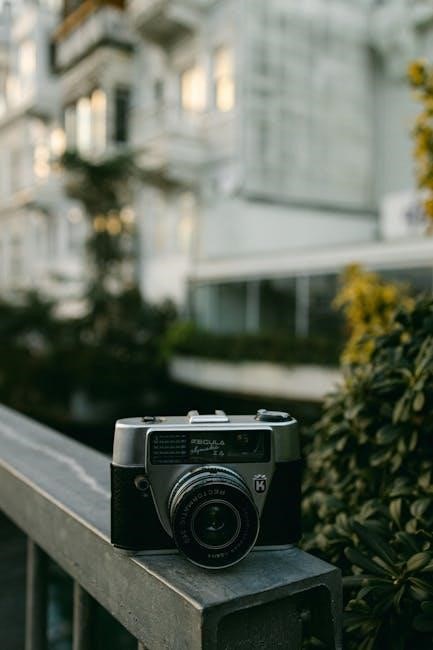
Understanding Manual Focus
Manual focus involves adjusting the lens ring to achieve sharpness, giving photographers direct control over the focal point for precise and creative image composition.
How Manual Focus Works
Manual focus operates by physically adjusting the lens’s focus ring to align the optical elements, ensuring the subject is sharp. Unlike autofocus, which relies on sensors and algorithms, manual focus gives photographers direct control over where the lens focuses. By turning the ring, the lens elements move to achieve optimal sharpness. This process requires skill and practice to master, especially in dynamic situations. Techniques like zone focusing can simplify the process, allowing photographers to pre-focus on a specific area and capture sharp images quickly.
Advantages of Manual Focus Lenses
Manual focus lenses offer precise control over focus placement, enabling photographers to achieve exact sharpness where desired. They eliminate focus hunting and are ideal for scenarios requiring deliberate focal adjustments, such as landscapes or portraits. These lenses often feature robust build quality and are typically more affordable than their autofocus counterparts. Additionally, manual focus lenses minimize lens movement during shooting, making them suitable for time-lapse photography and panoramic stitching. This level of control and reliability makes them a favorite among professionals and enthusiasts alike.
Disadvantages of Manual Focus Lenses
Manual focus lenses require more time and effort to adjust, making them less suitable for fast-paced or dynamic photography. They demand a high level of skill and practice to achieve sharp focus consistently. Additionally, manual focus lenses can be challenging to use in low-light conditions or with moving subjects. Older manual focus lenses may lack modern features like weather sealing or advanced optics, and they often require adapters for use on newer camera systems.
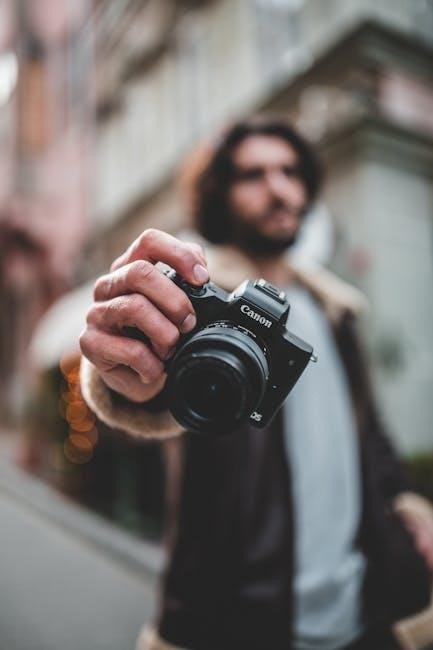
When to Use Manual Focus Lenses
Manual focus lenses are ideal for scenarios requiring precise control, such as portrait, landscape, and macro photography, where exact focus placement is critical for the desired effect.
Scenarios Where Manual Focus Excels
Manual focus lenses shine in scenarios where precise control is essential, such as portrait photography for exact eye focus, landscape for hyperfocal techniques, and macro for minute details. They also excel in filmmaking, where deliberate focus shifts enhance storytelling, and in low-light conditions where autofocus may struggle. Additionally, when using vintage lenses with adapters or creating panoramas, manual focus ensures consistency across images. Zone focusing is another technique where manual lenses excel, allowing quick adjustments for street or candid photography.
Genres of Photography That Benefit from Manual Focus
Manual focus lenses are ideal for portrait, landscape, and street photography, where creative control and precise focus are crucial. They excel in macro photography for capturing intricate details and in filmmaking for smooth focus transitions. Additionally, fine art and still life photography benefit from the exacting control manual focus provides, allowing photographers to emphasize specific elements in their compositions. Vintage and unique optics often used in manual focus lenses also add a distinctive aesthetic to fashion and artistic shoots.
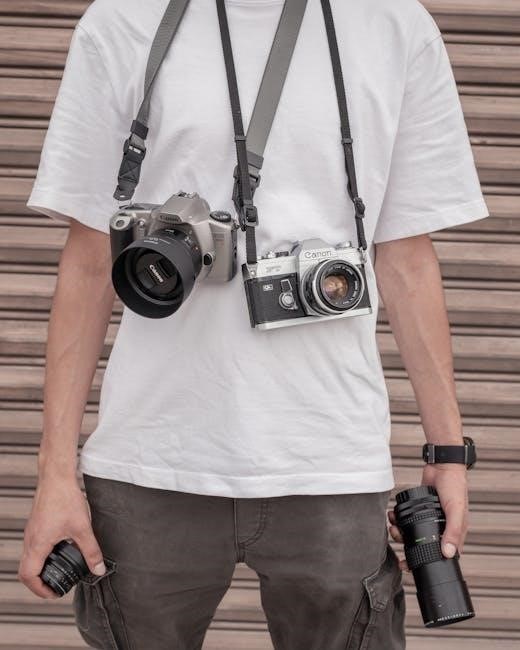
How to Use Manual Focus Lenses Effectively
Mastering manual focus lenses requires practice, patience, and understanding your equipment to achieve precise control over your photography, enhancing creativity and technical skill.
Techniques for Achieving Sharp Focus
Achieving sharp focus with manual lenses requires precision and practice. Use techniques like zone focusing for quick adjustments, especially in dynamic situations. Live view mode and focus peaking tools on modern cameras assist in verifying sharpness. Rotate the focus ring slowly and deliberately, ensuring the subject’s eyes or key details are crisp. For landscapes, stopping down to a smaller aperture (e.g;, f/8 or f/11) increases depth of field, ensuring more of the scene is sharp. These methods refine your manual focusing skills for professional results.
Using Focus Peaking and Other Aids
Focus peaking is a powerful tool for manual focus lenses, highlighting sharp areas with colored overlays. Combined with live view mode, it allows precise adjustments. Depth of field scales on lenses help plan focus zones, ensuring sharpness across the frame. These aids enhance control and accuracy, making manual focusing more efficient and reliable for photographers of all skill levels.
Popular Manual Focus Lenses
Popular manual focus lenses include the Rokinon 12mm f/2.0, 7Artisans 25mm f/1.8, and Venus Optics Laowa 10mm f/2.8. These lenses are favored for their optical quality and unique designs.
Recommended Lenses Across Different mounts
Recommended Lenses Across Different Mounts
For various mounts, standout manual focus lenses include the Rokinon 12mm f/2.0 for APS-C cameras, the 7Artisans 25mm f/1.8 for mirrorless systems, and the Venus Optics Laowa 10mm f/2.8, known for its wide-angle capabilities. Nikon users often favor the AIS 28mm f/2.8, while Pentax enthusiasts appreciate the smc Pentax-M 50mm f/1.7. Sony shooters benefit from lenses like the Voigtländer Nokton, offering exceptional optical quality across different mounts and camera types, ensuring versatility and performance.
Prime vs. Zoom Manual Focus Lenses
Prime lenses, with fixed focal lengths, often deliver superior optical quality and wider apertures, making them ideal for low-light and shallow depth-of-field photography. Zoom lenses, while less common in manual focus, offer versatility with adjustable focal lengths, suiting dynamic shooting scenarios. Primes like the Rokinon 12mm f/2.0 excel in portability and image sharpness, whereas zooms such as the Nikon AIS 28mm f/2.8 provide adaptability. The choice depends on whether priority lies in optical perfection or focal flexibility, each catering to different photographic needs and preferences.
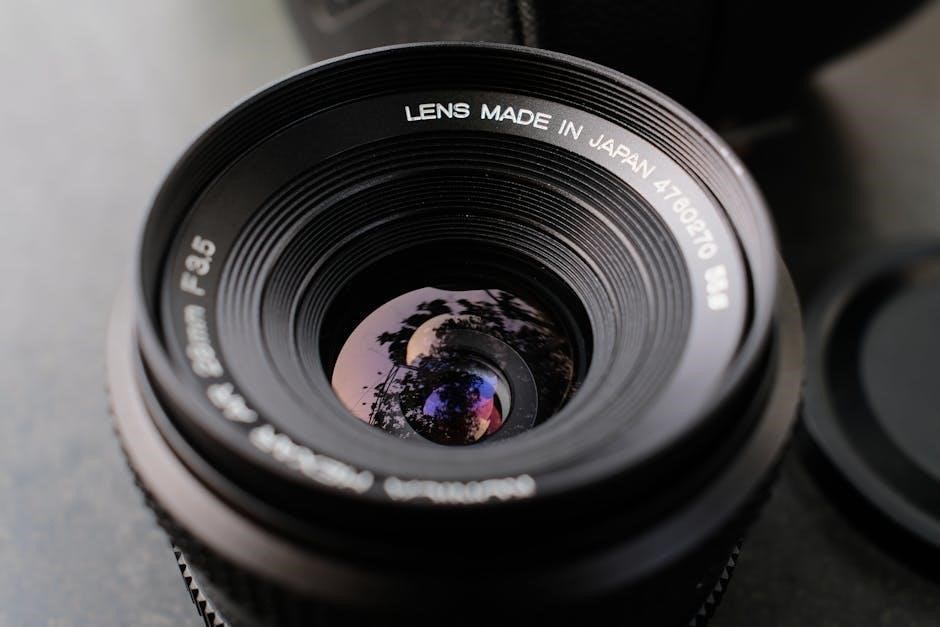
Modern Manual Focus Lenses
Modern manual focus lenses integrate advanced optical designs and materials, offering exceptional sharpness and unique features like the DJI Focus Pro’s LiDAR technology for precise control.
Manual Focus Lenses in the Digital Age
Manual focus lenses have evolved in the digital age, offering precise control and compatibility with modern mirrorless cameras. Innovations like focus peaking and electronic viewfinders enhance accuracy, making manual focusing efficient. Brands such as Laowa and Venus Optics create lenses with unique features, like the Laowa 10mm f/2.8, which combines wide angles with manual focus precision. These lenses cater to both filmmakers and photographers seeking creative control and optical excellence in their work.
High-End Manual Focus Lenses
High-end manual focus lenses deliver exceptional optical quality and precision engineering. Models like the Nikon Noct and Leica APO-Summicron are renowned for their superior sharpness and minimal distortion. These lenses often feature aperture controls and robust builds, appealing to professionals and enthusiasts. Despite the lack of autofocus, they offer unparalleled creative control and craftsmanship, making them sought-after tools for photographers and filmmakers seeking optical excellence and durability in their work.
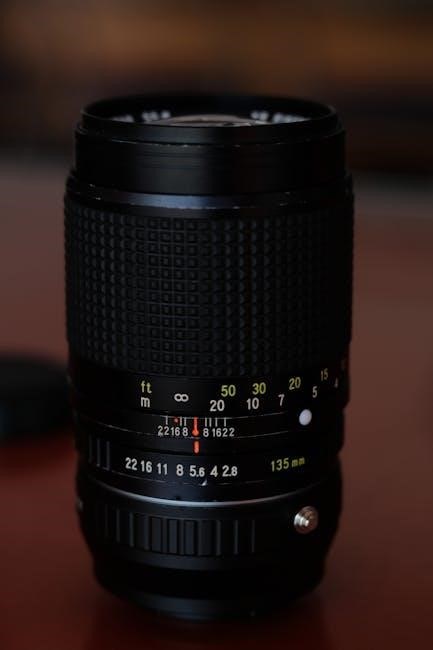
Challenges of Using Manual Focus Lenses
Manual focus lenses require precise adjustments, which can be time-consuming, especially in dynamic situations. The absence of autofocus complicates quick focusing, demanding skill and patience from photographers.
Common Issues and How to Overcome Them
Manual focus lenses present challenges like slow focusing in dynamic situations and difficulty in achieving precise focus, especially with fast-moving subjects. To overcome these, photographers can use techniques such as zone focusing and pre-focusing, relying on depth of field to ensure sharpness. Additionally, employing focus peaking aids and magnified live view enhances accuracy. Practice and familiarity with the lens mechanics also significantly improve manual focusing efficiency and effectiveness.
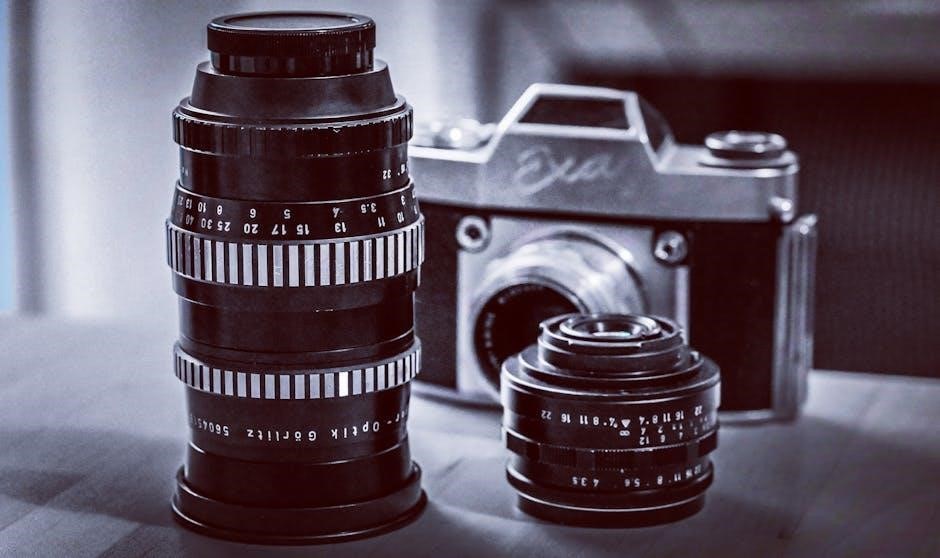
Setting Up Your Camera for Manual Focus
Enable manual focus mode on your camera and lens, then use focus peaking or magnified live view to ensure precise control over your focal point.
Camera Settings for Optimal Manual Focus
For optimal manual focus, enable manual focus mode on both your camera and lens. Use focus peaking to highlight sharp areas, and magnify live view for precision. Adjust the diopter to calibrate the viewfinder to your eyes. Set the camera to manual or aperture priority mode for full control. Use custom buttons for focus assist and ensure image stabilization is enabled if available. Finally, set the white balance and ISO appropriately for accurate exposure and focus.
Accessories to Enhance Manual Focusing
Several accessories can enhance manual focusing precision and efficiency. Focus peaking tools highlight sharp areas, while magnification aids provide detailed zoom for critical focus. Lens gears and follow focus systems allow smooth, precise adjustments, especially for video. A remote focus controller enables hands-free operation, reducing camera shake. Additionally, adapters for third-party lenses ensure compatibility and proper functionality. These accessories streamline the manual focus process, helping photographers achieve sharper images consistently.
Manual focus lenses offer photographers precise control and creative freedom, making them a timeless choice for achieving exceptional image quality and artistic expression in various photography genres.
Final Thoughts on Manual Focus Lenses
Manual focus lenses provide photographers with unparalleled creative control and precision, allowing for deliberate artistic choices. While they require skill and patience, the rewards are significant. These lenses are ideal for genres like portrait, landscape, and macro photography, where exact focus placement is crucial. Despite the convenience of autofocus, manual focus lenses remain a popular choice among professionals and enthusiasts seeking to enhance their craft and achieve unique visual outcomes in their work.
